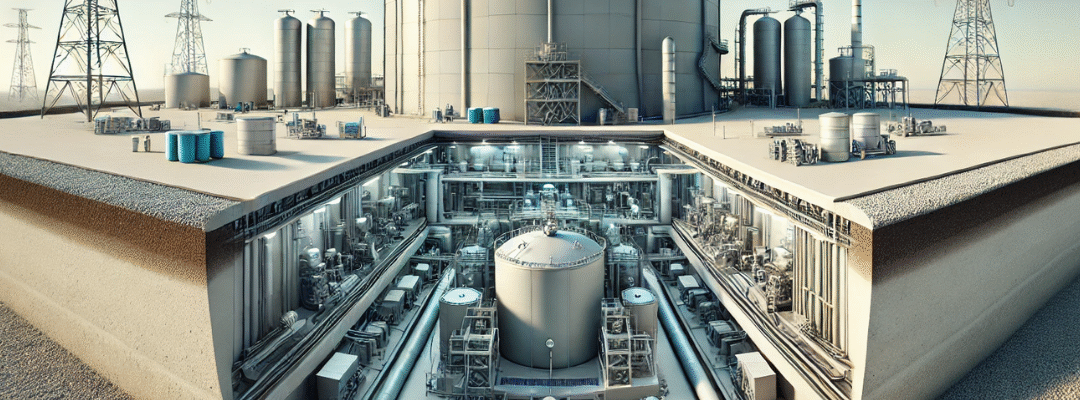We pride ourselves on being a leading manufacturer, supplier, and dealer of high-quality underground water storage tanks. With over 15 years of hands-on experience in the industry, we specialize in creating effective and reliable storage solutions tailored to your specific needs. Designing an underground water storage tank requires meticulous planning and consideration of various factors to ensure safety, reliability, and compliance with industry standards. Below, we outline essential design considerations to help you create a robust underground water storage tank.
1.Define Purpose & Estimate Capacity
Understanding Usage
The first step in designing your underground water storage tank is to clearly define its purpose. Whether for drinking water, fire suppression, greywater reuse, or irrigation, understanding the intended use is crucial. For example, a residential tank for irrigation may require different capacity specifications than a commercial tank for fire suppression. Our team analyzes various use cases, drawing on our extensive experience to provide tailored recommendations that meet your unique requirements.
Storage Duration Considerations
Consider backup needs and seasonal rainfall trends. In arid regions, tanks may need to hold several weeks’ worth of water to ensure a reliable supply during dry spells. We utilize local climate data and historical rainfall patterns to recommend optimal tank sizes, ensuring a dependable water supply year-round.
2.Assess Site & Location Factors
Soil Profile Analysis
Conducting a thorough geotechnical analysis is essential to evaluate soil type, groundwater levels, and load-bearing capacity. Soils with high clay content or loose structures may require additional stabilization measures. We collaborate with certified geotechnical engineers to provide accurate assessments and tailored recommendations, ensuring the longevity and integrity of your tank.
Drainage Solutions
Selecting a location away from flood-prone areas is vital. Proper perimeter drainage mitigates hydrostatic pressure during heavy rainfall, protecting the tank’s integrity. Our team designs comprehensive drainage systems that enhance the long-term performance of your installation, supported by industry best practices.
Accessibility & Obstruction Management
Choose a tank location that does not interfere with building foundations, tree roots, or utility lines, ensuring easy access for maintenance and inspections. Our project managers leverage their extensive experience to help you identify the best site layout for optimal functionality and future access.
3.Select the Right Material for Your Water Tank Design
Choosing the appropriate material is vital for the tank’s longevity and functionality:
- Reinforced Concrete: Ideal for large-capacity tanks or those under heavy loads, such as driveways.
- HDPE (High-Density Polyethylene): Lightweight and corrosion-resistant, suitable for smaller residential applications.
- Stainless or Galvanized Steel: Durable but requires anti-corrosion treatment; best for industrial or potable water storage.
- Fiberglass (FRP): Non-corrosive and strong, perfect for chemically treated or non-potable water systems.
Our experts guide you through the selection process, ensuring you choose the best material for your specific application, backed by years of industry knowledge and successful projects
4.Waterproofing & Leak Prevention Strategies
Implement a multi-layer protection strategy by combining external coatings (like bitumen or epoxy) with internal liners (PVC or rubber). Proper sealing of seams and joints with waterproof sealants is essential to prevent leaks and ensure long-term durability. Our successful projects demonstrate the effectiveness of these strategies, reinforcing our commitment to quality and reliability.
5.Structural & Load Considerations
Optimizing Tank Shape
Cylindrical tanks provide better stress distribution in high-pressure environments, while rectangular designs may be more suitable for urban settings where space is limited. Our engineering team conducts thorough analyses to determine the optimal shape for your specific site conditions, ensuring structural integrity and compliance with safety standards.
Traffic Load Design
If the tank is installed beneath driveways or parking lots, it must be engineered to withstand both dynamic and static vehicle loads. We adhere to industry standards, ensuring safety and reliability in every project, and our designs are verified through rigorous testing.
Backfill Engineering Techniques
Utilize compacted layers and follow backfill specifications recommended by the tank manufacturer to ensure stability and prevent shifting. Our installation teams are trained in best practices for backfill, enhancing tank longevity and performance.
6.Maintenance Access & Safety Features
Incorporate manholes and inspection ports with corrosion-resistant covers. Ensure built-in ladders or step-irons are available for safe entry. Proper air vents are necessary to prevent vacuum pressure and allow gas dissipation, enhancing safety during maintenance. We prioritize safety in our designs, ensuring compliance with the latest regulations and industry best practices.
7.Ventilation & Animal Intrusion Control
Install screened vents to prevent insects and rodents from entering the tank. Use lockable, gasketed access hatches to maintain water hygiene and deter tampering, ensuring the quality of stored water. This attention to detail protects your investment and ensures water safety, reflecting our commitment to excellence and customer satisfaction.
8.Foundation & Floatation Control
A stable bedding layer, typically 100–150mm thick, is essential for uniform support and drainage. In areas with a high water table, consider anti-buoyancy systems such as ground anchors or concrete tie-downs to prevent flotation. Our engineers assess your site conditions to recommend the best solutions, ensuring your tank remains secure and functional.
9.Ensure Water Quality & Hygiene
Utilize NSF or AS/NZS certified food-grade materials for potable water. Incorporate filtration systems, including pre-tank filters and post-tank treatments like UV or activated carbon, depending on the intended use to maintain water quality. Our commitment to safety ensures that your water storage solutions meet the highest standards, backed by our extensive industry experience and adherence to best practices.
10.Temperature Control for Water Tank Design
For tanks storing potable water in extreme temperatures, consider thermal insulation. Installing tanks deeper (e.g., over 1.2 meters) can help regulate temperature naturally, protecting the water from extreme heat or cold. Our team provides insights on insulation options tailored to your climate, ensuring optimal performance and efficiency.
11.Hydrostatic Pressure & Buoyancy Management
Design must account for both internal water pressure and external groundwater pressure. Reinforced walls and bases are necessary for tanks located in flood-prone areas to ensure structural integrity. We follow the latest engineering practices to guarantee your tank’s resilience against environmental challenges, ensuring peace of mind for our clients.
12.Piping & Hydraulic Design Considerations
Ensure efficient flow by strategically placing pipes to prevent sediment buildup and allow for complete tank emptying. Include anti-siphon and backflow devices to protect potable systems from contamination, maintaining water safety. Our hydraulic engineers specialize in designing systems that optimize flow and minimize maintenance, drawing on years of practical experience and proven methodologies.
13.Comply with Local Regulations
Adhere to local building codes, water authority standards, and EPA/WHO guidelines for water quality and structural safety. Conduct an environmental review to assess groundwater protection and stormwater impact, ensuring compliance with all regulations. We stay updated on regulatory changes, ensuring your project remains compliant and hassle-free, giving you confidence in your investment.
14.Design for Long-Term Durability
Aim for a lifespan of at least 30–50 years with minimal intervention by using durable materials and protective coatings. Implement corrosion control measures, especially in saline or acidic soil conditions, to extend the tank’s life. Our commitment to quality ensures that your investment is protected for years to come, backed by our proven track record of successful projects and satisfied clients.

